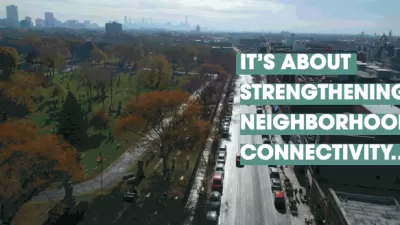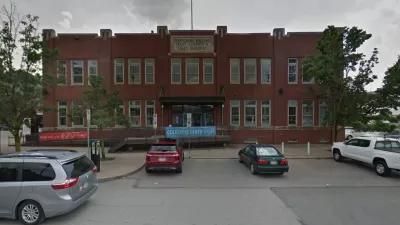Vermont enabled tax increment financing (TIF) for the city of Burlington in 1985, in keeping with a nationwide trend at the time. TIF is still a major player in the state's redevelopment efforts to this day.

Will Jason writes on the subject of tax increment financing (TIF), specifically as deployed as an economic development tool in the state of Vermont.
TIF functions by earmarking property tax revenues from increased real estate values in a defined district. Cities can use the revenue for development, whether public infrastructure or direct subsidies for private projects. However, as research has shown, TIF comes with hidden costs, from the loss of funds for schools and other local public services to a lack of accountability that can often lead to the questionable expenditure of tax dollars.
Jason credits active state oversight for insulating Vermont from some of the common risks associated with TIF, but also writes that Vermont still lacks a clear answer for a very fundamental question: "Does it truly stimulate new economic activity?"
Bruce Seifer, who helped lead the economic development office in Burlington for three decades, is quoted in the article, making the case for the benefits of the TIF program in the city of Burlington.
A study by University of Illinois at Chicago Professor David Merriman published in fall 2018 suggests that TIF programs do not achieve their stated goals of economic development.
The state of Vermont followed suit with its own study:
Last year, at the direction of the legislature, Vermont’s Legislative Joint Fiscal Office published a study that examined the performance of the state’s 10 active TIF districts. Comparing projected TIF revenues against revenues under a hypothetical scenario with no TIF, the study projects that from 2017 to 2030 TIF will cost the state about $68 million in school revenue (Vermont has an unusual statewide funding system for schools), and cost municipal general funds a total of $43 million, although it didn’t account for non-property tax revenues. It concluded that the economic benefits of TIF are uncertain.
Still, Vermont and its communities remain bullish on TIF, and Jason describes the state's approach to the program as effectively safeguarded against risk.
FULL STORY: Vermont Attempts a Kinder, Gentler TIF—But Will it Work?

Planetizen Federal Action Tracker
A weekly monitor of how Trump’s orders and actions are impacting planners and planning in America.

San Francisco's School District Spent $105M To Build Affordable Housing for Teachers — And That's Just the Beginning
SFUSD joins a growing list of school districts using their land holdings to address housing affordability challenges faced by their own employees.

The Tiny, Adorable $7,000 Car Turning Japan Onto EVs
The single seat Mibot charges from a regular plug as quickly as an iPad, and is about half the price of an average EV.

As Trump Phases Out FEMA, Is It Time to Flee the Floodplains?
With less federal funding available for disaster relief efforts, the need to relocate at-risk communities is more urgent than ever.

With Protected Lanes, 460% More People Commute by Bike
For those needing more ammo, more data proving what we already knew is here.

In More Metros Than You’d Think, Suburbs are Now More Expensive Than the City
If you're moving to the burbs to save on square footage, data shows you should think again.
Urban Design for Planners 1: Software Tools
This six-course series explores essential urban design concepts using open source software and equips planners with the tools they need to participate fully in the urban design process.
Planning for Universal Design
Learn the tools for implementing Universal Design in planning regulations.
Smith Gee Studio
City of Charlotte
City of Camden Redevelopment Agency
City of Astoria
Transportation Research & Education Center (TREC) at Portland State University
US High Speed Rail Association
City of Camden Redevelopment Agency
Municipality of Princeton (NJ)





























